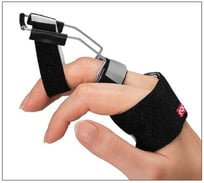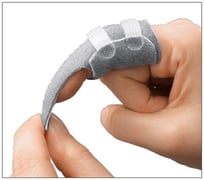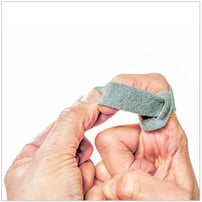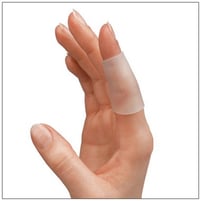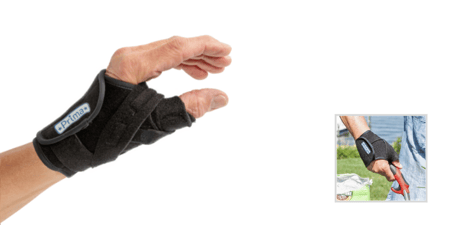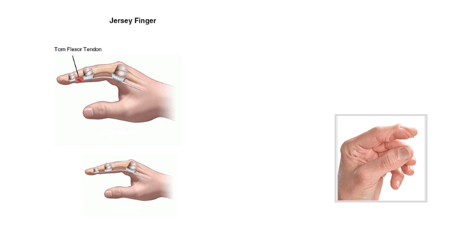It's that time of year where many states across the country are dealing with major snow storms with multiple inches of snow. Cleanup of snow in this amount often occurs by using snow blowers. Unfortunately, snow blowers can be the cause of many devastating hand injuries.
With the possibility of new clients with snow blower injuries, it is a good time to review care of wounds. Snow blower injuries can be very complex and certainly the most critical component of the injury guides the care in therapy, i.e. flexor tendon involvement, but most often snow blower injuries present with wounds requiring immediate care.
Wounds can be classified as black, yellow, or red. The color of the wound drives the care. The ultimate goal of wound care is to encourage a clean, red wound that heals without complication.
What are Black Wounds?
Black wounds are covered with thick necrotic (devitalized) tissue or eschar. Treatment should encourage and assist the removal of this tissue. Debridement of these wounds is needed via surgery, whirlpool, irrigation, soap and water scrubbing, or mechanical and chemical means. Dressings on a black wound should also encourage softening and removal, i.e. wet-to-dry dressings.
What are Yellow Wounds?
Yellow wounds are generating exudate or cellular debris. Treatment should encourage separation of the wound debris without disrupting healthy granulation tissue and may include soap and water cleaning, irrigation, or whirlpool. Dressing should assist with absorbing the exudate and controlling bacteria and may include wet-to-dry, wet-to-wet, or semipermeable foams.
What are Red Wounds?
Red wounds are bloody or pink in appearance and contain healthy granulation tissue. No debridement is needed and cleaning the wound can be completed via sterile water or gentle sterile saline as needed. Treatment and dressing should focus on protecting the wound fluid and preventing dessication (extreme drying) without interrupting the granulation. Occlusive or semiocclusive dressing such as a petroleum based film may be best for red wounds.4
While the wounds are being cared for, it is important to address range of motion as appropriate to healing. For any difficulty in regaining flexion of the fingers, the 3pp Step Down Splint, 3pp Finger Trapper, or 3pp Final Flexion Wrap can be used once the wounds are healed.
In addition, prior to discharge from structured therapy, it is also vital to address scarring as needed for an individual to regain comfortable functional use of their involved hand. Because the initial injury may involve complex scarring, the Gel Tubes may be considered to wear at night during sleep to provide assistance to scar remodeling. According to research, gel sheeting has been found to reduce scar thickness, pain, and itchiness and allow increased pliability of the scar.


